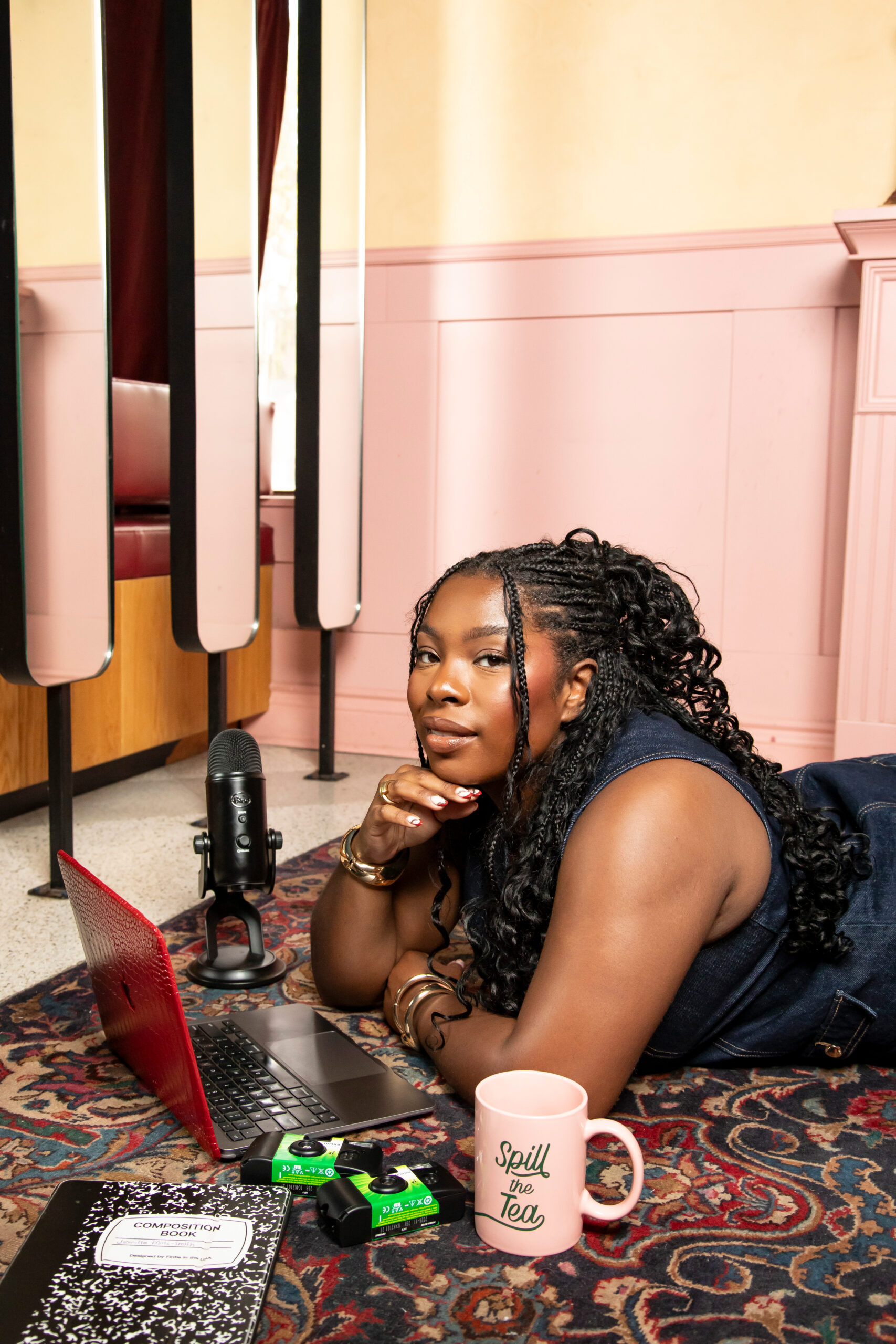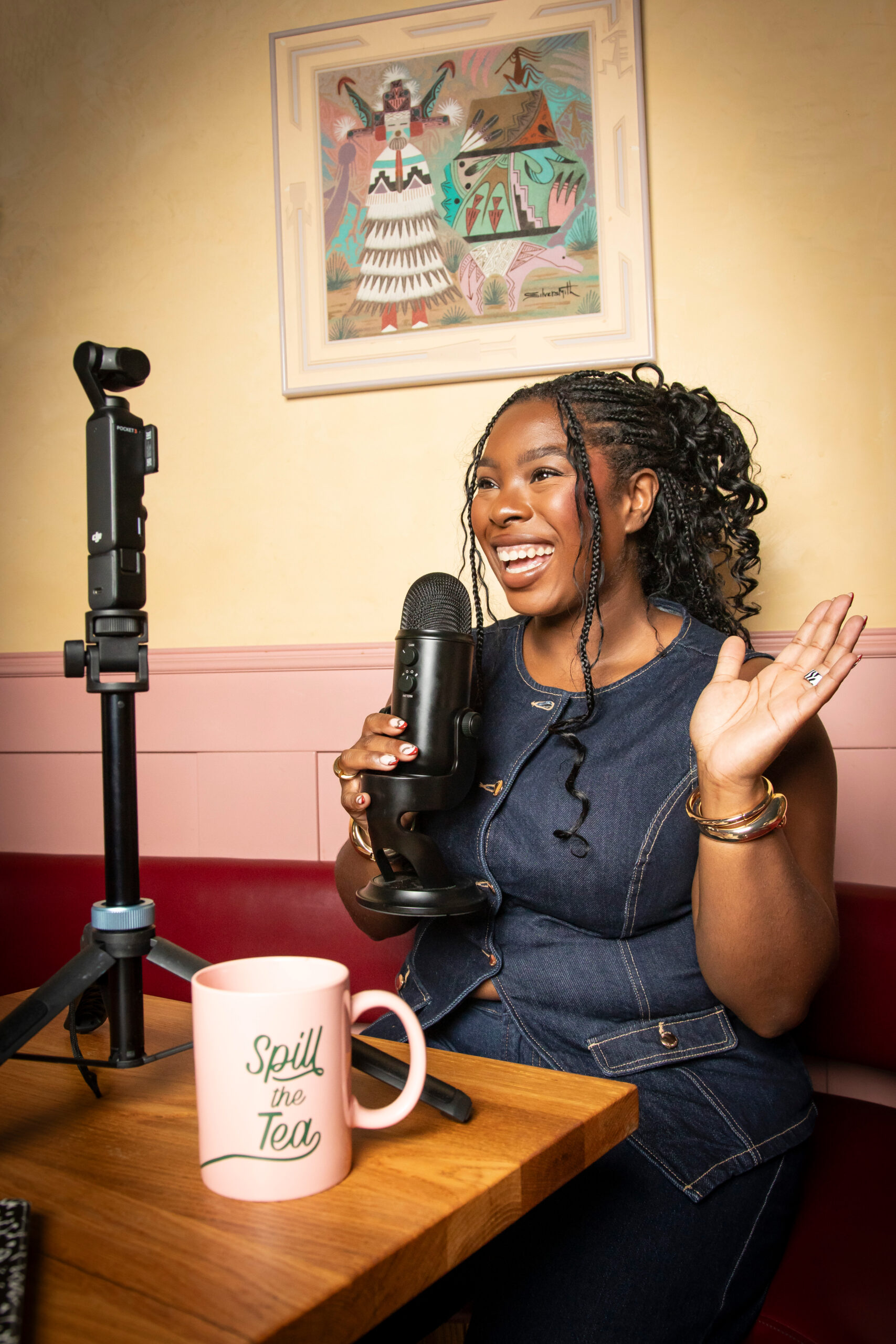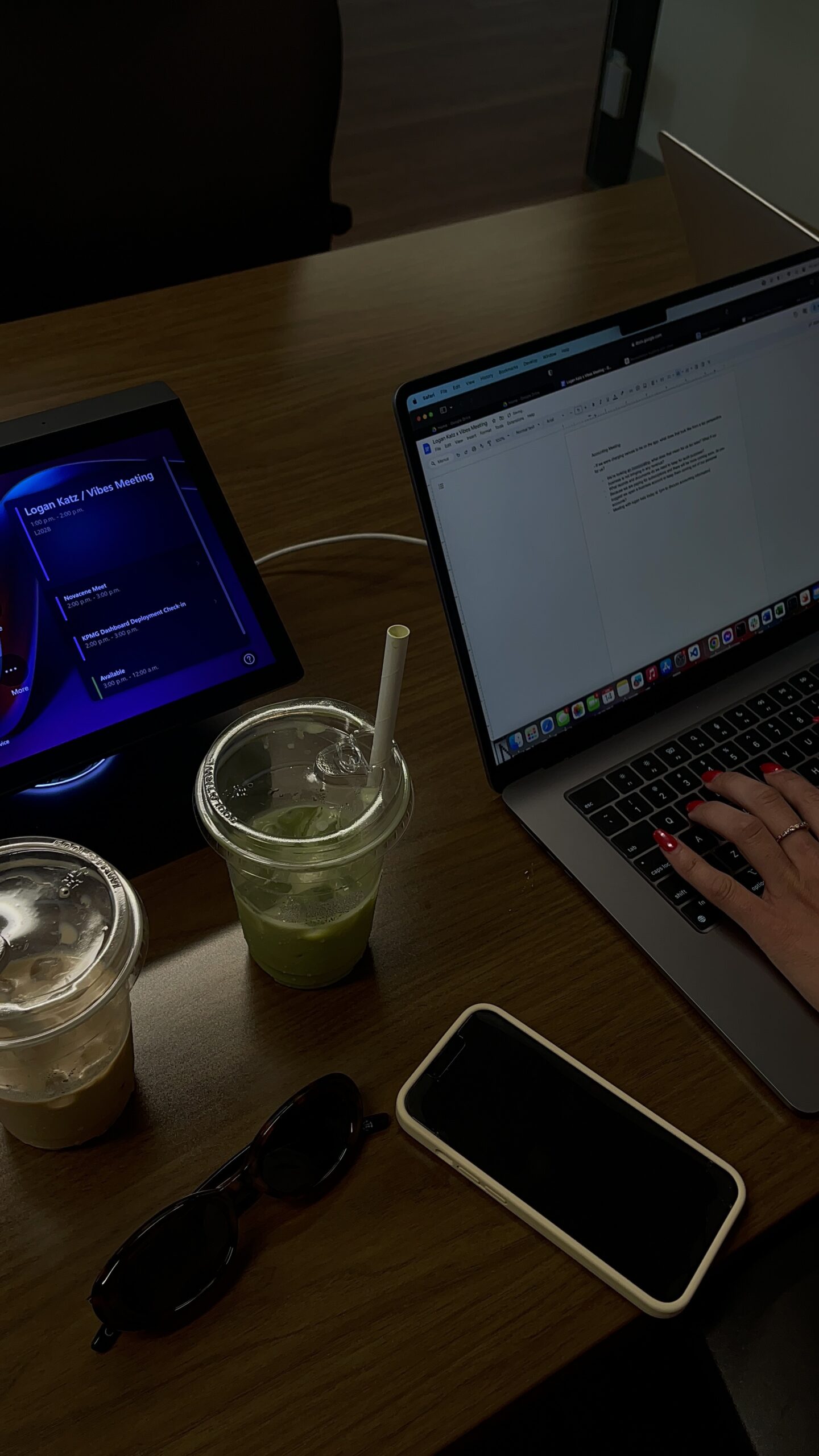HEY FRIEND!
I'm jemilla!
In the past 4 years, I’ve cut my teeth strategizing & writing award-worthy, revenue-increasing, results-snatching copy. And what really lights my fire is writing for woman-owned and BIPOC-led brands. I’m talkin’ the first day after a braiding appointment type of excited! Energizing them to go big with their bold ideas so that when launch time happens, the world thinks “OMG FINALLY, I’ve been waiting for something like this.” And giving them the tools to diversify the market.
about me
services
How to Write Great Headlines: A Step-by-Step Guide
October 6, 2025
Did you know you have 8 seconds? Not 30 minutes, like the trending audio suggests, but only 8 seconds—that’s how long the average person spends on a webpage before deciding whether to stay or leave. And the first thing they’ll see is your headline, so you need to know how to write great headlines!
Your headline is such an important part of your web page, because it’s what gets people to either stay or leave, to keep scrolling or ‘x’ out, or to book with you or bounce like a basketball. And since 80% of people read your headline but only 20% will read the rest of a webpage’s content, your headline has some serious heavy lifting to do.
So I’m going to walk you through how to write great headlines that capture attention, communicate value, and convert visitors into readers, customers, and brands fans, whether you’re writing a homepage, landing page, or blog post. In short, let’s write headlines that actually work!
What Makes A Headline Compelling?
The Psychological Aspect
Great headlines make people curious. They promise solutions to problems, or offer shortcuts to what you’ve been wanting. The best headlines speak directly to what you want, what you fear, and creates an emotional connection that drives them to keep reading.
Keep It Simple, Sweetie!
Creativity is fun, but when it gets in the way of cleverness, it gets in the way of your headline working. Your core message needs to come through from the jump so your reader doesn’t have to do work to understand what you offer.
Like this carousel that tells viewers exactly what they’ll get from swiping.
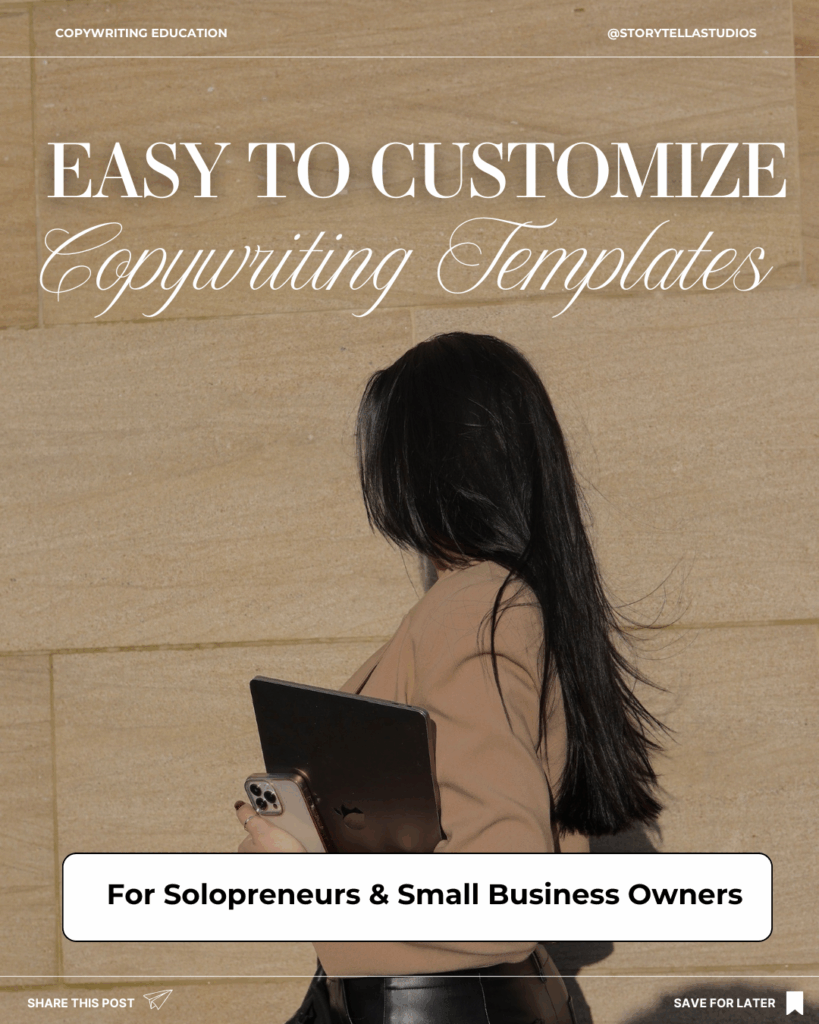
Specificity & Value
Vague promises like “Write your website copy in this workshop” are a lot less impactful than “In 2 hours, I’ll walk you through how to write engaging, strategic, personality-rich copy for your web page of choice that you can copy and paste into your web design by the end of the workshop” because it gives readers a clearer picture of what they’re getting. Concrete numbers, timeframes, and outcomes make headlines more believable and compelling.
Emotional Connection
Want to know how to write great headlines? Make people feel something. Whether it’s excitement about a solution, fear of missing out, or laughter from a comedic call-out, emotional engagement drives action. Your headline should speak to both the rational and emotional sides of decision-making.
Like this reel, which united my followers better than any post last year OR this year AND attracted my ideal clients even more.
@storytellastudios This might make some ppl mad, but it has to be said! I saw a Reel that said a good way to refresh trending and successful content was to → go to the explore page → type in a keyword → go to the Reels tab → see what comes up. So I did that. I typed in ‘copywriting’, and guess what I saw? A sea of men. Most where white, some were Black, and there were even a few women mixed in there. But the large majority of “trending” copywriting reels were from men, or white men, or white women — the Black and Brown women I saw on this hunt were few and far between. Disappointing, but not surprising. When I decided to become a copywriter, I BEEN knew that I wasn’t going to see a lot of faces that look like mine in this industry. When I do, it’s like “Ariana, what are you doing here? 😂😂😂” A lot of the copywriting education getting the most play are from white women, and men that focus on the money and not nearly as much on the impact. And you can see it in the copy, even if you don’t see the person writing it. How many times have you come across an IG caption that was just… OFF, because the copywriter was TRYING (and failing) to use AAVE right? Or seen an ad that was giving major 😬😬😬 vibes because srsly WHY WASN’T THERE A BLACK PERSON IN THE ROOM TO SHOOT THIS DOWN?! My guess is A LOT. That’s why we need Black & Brown women copywriters. I can think of a few, but I struggled to find more. We need more diverse voices in the marketing world. Because let’s be honest: a lot of copy out there isn’t connecting with BIPOC audiences. Even though Black spending power is rising & brand diversity impacts consumer purchasing intent, BIPOC people still don’t feel represented — and if they are, it feels like a stereotype. So if your attempt at “urban” language is giving 2016 Facebook post, or your stock photos scream “diversity hire,” I gotchu ⬇️ 👩🏾💻Inquire for my 1:1 services 📁 Download Copywriting Fundamentals for inclusive language tips 📚Read my latest blog post — The Culture Gap: Why You’re Not Resonating with BIPOC #BlackWomenCopywriters BBlackGirlsInMediaBBlackWomenInBusinessBlackCreativesMatter RRepresentationMattersDDiversityAndInclusionBBlackVoicesBBlackOwnedBusinessBlackEntrepreneurs DDiversityInCopywritingBBlackCopywriterWomenOfColorInBusiness
♬ original sound – Storytella Studios® 🪩💥
Urgency or Curiosity
Headlines that create a sense of urgency (without being manipulative) or spark genuine curiosity encourage immediate action. Questions, unexpected statements, or time-sensitive offers can do that!
Let’s Work: Writing a Compelling Headline
Step 1: Know Your Audience
The foundation of any compelling headline is a deep understanding of who you’re writing for.
Identify Their Pain Points
Start by listing the specific problems, frustrations, and challenges your target audience deals with so your headline can address one of them head-on.
- What are they struggling with?
- What have they already tried that didn’t work?
- What’s standing between them and their goals?
For example, if you’re targeting small business owners struggling with social media marketing, they might be dealing with a lack of time, are confused about which platforms to use, find it hard creating engaging content, or are frustrated with the poor results they keep getting even with all the effort they’re putting in.
Speak Their Language
Start banking the exact words your audience uses to describe their problems and desired solutions. Look at social media comments, online forums, customer reviews, and even comments on competitor content. This’ll reveal the vocabulary that’ll resonate in your headlines.
Research Competitor Headlines
Look at successful headlines in your niche—not to copy them, but to understand what’s already working.
- What patterns do you notice?
- How is it appealing to emotion?
- Where are there gaps or opportunities to stand out?
Step 2: Clarify Your Value Proposition
Once you know your audience, you need to get crystal clear on what you’re offering them so your headline doesn’t confuse and, in-turn, drive people away.
Define the Big Benefit
What’s the single most important benefit someone gets from your product, service, or content? Not what it does, but what it does for them. The benefit is what people actually care about, and should be the star of your headline.
If you’re selling project management software, for example, the feature is “task assignment and tracking.” The benefit is “never miss another deadline” or “reduce project chaos by 50%.”
Communicate A Simple Promise
What’s the transformation you provide? What does someone’s life look like before and after working with you? Your headline should communicate this transformation clearly and quickly.
Use the formula: “I help [target audience] achieve [desired outcome] without [common obstacle] through [offer].”
For example: “I help busy parents plan healthy meals without spending hours in the kitchen through weekly cooking videos & easy-to-follow recipes.”
Try using this formula—if you can’t articulate your value proposition quickly and clearly, try again. We need your headline to work!
Focus on The Outcome
Your headline should paint a picture of the end result instead of explaining how to get there, and what you used to do it. Instead of “Comprehensive SEO Audit Tool with 50+ Metrics,” try “Discover Exactly Why Your Website Isn’t Ranking (and How to Fix It).” The second version focuses on the outcome the reader wants.
Step 3: Choose Your Headline Formula
Once you’ve done that all that, then you can use a formula to start actually writing your headline.
Power Words and Emotional Triggers
Some words hit harder psychologically—like “proven,” “guaranteed,” “effortless,” “secret,” “ultimate,” “essential,” and “transform”. Numbers, especially odd numbers, also increase engagement. But you want to use these strategically— if you use too many power words, your headlines will feel spammy.
Popular Headline Frameworks
How-To Headlines
Why they work: they promise specific, actionable value.
When to use: educational content and tutorials
Example: “How to Write Compelling Headlines.”
(like this blog post!)
Number/List Headlines
Why they work: our brains love numbered lists.
When to use: blog posts, resource guides, and comparison content
Example: “7 Tools In My Lazy Business Owner Tech Stack”
Fun fact: odd numbers (especially 7) tend to perform better than even numbers!
Question Headlines
Why they work: questions engage readers by making them think about something they hadn’t fully considered before, and that creates curiosity.
When to use: to challenge an accepted idea or introduce something new
Example: “What If Your Work Ethic Is The Bottleneck In Your Business?”
Problem/Solution Headlines
Why they work: these directly address a relevant pain point and promise a solution.
When to use: landing pages and service offerings
Example: “Social Media Engagement Down? Let’s Fix Your Hooks”
Before/After Headlines
Why they work: these paint a picture, telling a story of transformation, and leverage social proof that makes you more credible.
When to use: case studies and success stories
Example: “From Invisible to A SERPs Star: How I 3x This Client’s Site Traffic From Google in 30 Days.”
By the way, I have 59 tried-and-trusted headline templates available in my free Headline Swipe File >>>
Step 4: Write Multiple Options
Never settle for your first headline attempt. Your first few headlines are usually clichéd because they’re the obvious choices. And the next few will just be bad, but you have to get them out of your brain so it doesn’t clog up valuable brain space.
Most copywriters will write dozens of headlines before choosing one because you might strike creative gold after several tries in. So set a timer for 15-30 minutes and bang out at least 10 headline options. Don’t edit or judge yourself at this point, just write!
Mix different formulas, try various angles on your value proposition, and experiment with different emotional appeals. Some will be terrible, and that’s fine. You’re looking for diamonds, and you have to dig through some dirt to find them.
Combining Different Formulas and Approaches
Try blending headline frameworks for a unique, more compelling headline.
Combine a question with a number: “Struggling with Headlines? Try These 5 Proven Formulas.”
Or mix problem/solution with how-to: “How to Write Headlines That Actually Convert (Without Being Salesy).”
Other Tools and Techniques for Headline Generation
Aside from my free Creative Copywriting 101 and Headline Swipe File resources, you can use tools like CoSchedule’s Headline Analyzer. You can also take successful headlines from your industry and adapt them to your message.
If “The Ultimate Guide to Email Marketing” seems to work well, maybe “The Ultimate Guide to Website Headlines” could work for you. It’s not plagiarism—you’re learning from proven formulas.
Step 5: Optimize for Clarity and Scannability
Once you have strong headline options, you can refine them.
Don’t Drone On
The ideal length for a headline varies depending on the medium and device, but research suggests 30-66 characters work best for most situations (Outbrain). Shorter headlines create more impact and are easier to scan, which is ideal in a world plagued by short attention spans.
So ask yourself: “Can I remove this word without losing meaning?” If yes, cut it.
Start With Important Keywords
Put your most important words at the beginning. Most readers scan from left to right, and you can’t guarantee they’ll read your entire headline. “Write Compelling Headlines: A Step-by-Step Guide” is weaker than “How to Write Compelling Headlines: A Step-by-Step Guide” because the action verb and promise come first.
This also helps with SEO, though writing for humans should always be your top priority.
Use Strong, Active Verbs
Active verbs aren’t just compelling, they spark action—like scrolling to read the rest of your piece of copy.
Weak: “Tools for Better Time Management”
Strong: “Master Your Time: 7 Tools That Actually Work”
Avoid Jargon and Ambiguity
Your headline isn’t the place to show how smart you are. If your Mom wouldn’t understand what you’re saying, simplify it.
“Leverage generative engine optimize for optimal conversion rate success” means nothing to most people. But “Get More Customers from Your Website By Appealing to AI” does!
Test your headline by reading it to someone unfamiliar with your industry. If they can’t immediately explain what you’re offering, you need to work on your headline.
Remove Filler Words
Get rid of words like “really,” “very,” “just,” and “literally” unless they serve a specific purpose, and replace weak phrases with stronger, more specific alternatives.
“Get better results” → “Double your results.”
“Learn some tips” → “Master these strategies.”
Step 6: Test and Refine
Even experienced copywriters can’t say for sure which headline will perform best. Testing removes guesswork and provides data-driven insights.
A/B Testing Methods for Headlines
If you have website traffic, use A/B testing tools like Google Optimize to test different headlines with real visitors. Show half your visitors one headline and half another, then measure which drives better engagement, time on the page, or conversions.
These same headline principles apply to your email subject lines, and most email platforms offer built-in split testing. So test two subject lines with a small subset of your list, then send the winner to the rest.
Ask A Friend
Before going through with a headline, share 3-5 headline options with your trusted colleagues or people from your target audience members. Ask them which immediately grabs their attention and why. Ask them to explain in their own words what they expect to get from each headline. This will reveal if your intended message is actually coming through.
But be careful with feedback from people who aren’t your target audience—their preferences may not match your actual customers’ preferences.
Read Your Headlines Out Loud
It’s simple, but doing this reveals awkward phrasing, unclear meaning, and rhythm problems. If you stumble while reading it aloud, your visitors will probably stumble while reading it in their head. Great headlines are easy to say and remember, so make sure yours is.
Check The Headline on Mobile vs. Desktop
Most web traffic comes from mobile devices, where headlines may wrap awkwardly. So look at your headlines on actual mobile devices, not just in responsive design mode. Does the message still work if the last few words get cut off? Is it easy to read at a glance on a small screen?
Real-World Examples and Analysis
Let’s examine some successful headlines from your favourite brands and break down what makes them work.
Example 1: Apple – “Any more pro and it would need an agent”
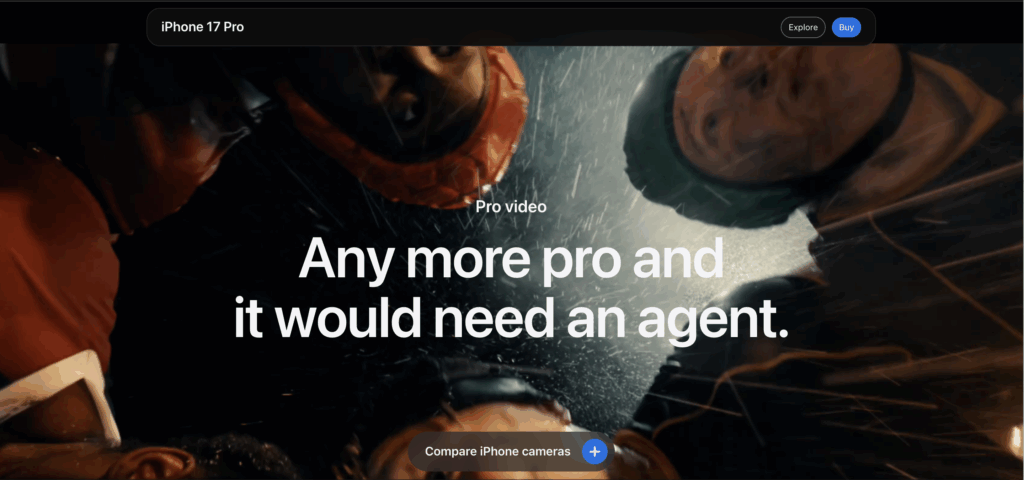
As a fellow actor who has the iPhone 17 Pro, I love this headline—but I wouldn’t need to be in the industry or have this phone to understand why it works.
- It knows their audience (the reader wants to take really great video)
- The big benefit is evident (you’ll take pro-level video)
- With supplementary imagery, it shows the outcome (a film, shot on iPhone 17 Pro)
- It speaks the audience’s language and isn’t jargony
- The before-after headline framework can be found at its very core, but the big wigs at Apple didn’t limit themselves
- It’s succinct, there are no filler words,
Example 2: Grammarly – “You think big. We’ll take care of the details”
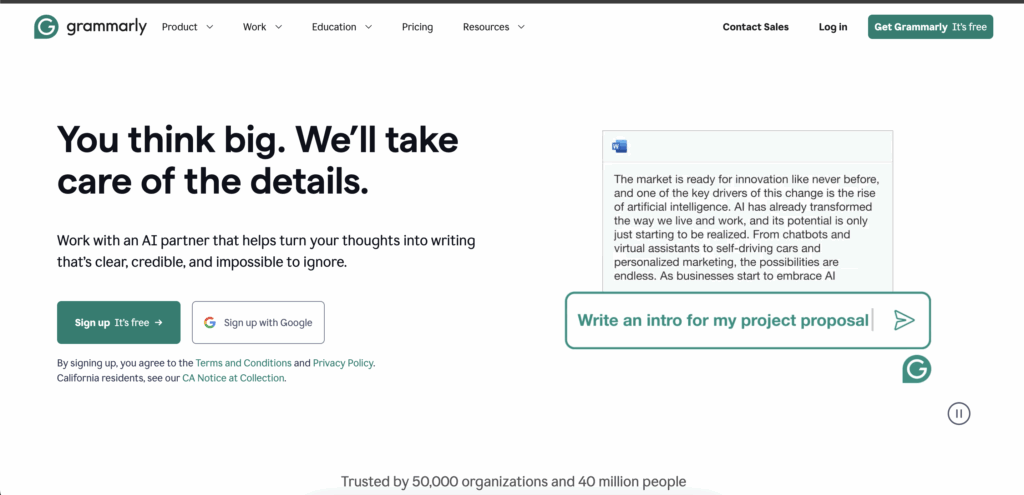
This headline:
- Creates an emotional connection with their target audience (people who write a lot)
- Communicates a primary benefit (saving time from not having to sweat the details)
- It uses the problem/solution headline framework (a digital helper who’s main job is taking care of the details so you can get back to your big-picture ideas)
Example 3: Nike – “Do things history could only dream of”
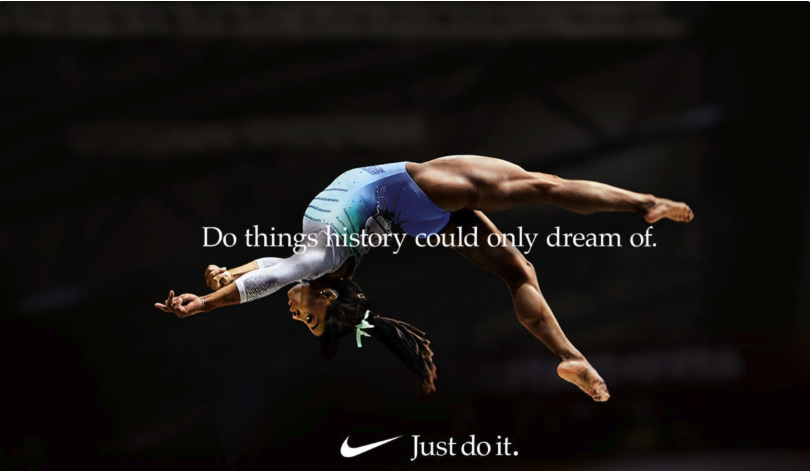
Nike always DOMINATES with their advertising because their storytelling is always on point—but just for the sake of education, here’s why this headline works:
- It speaks to their audience on an emotional level, in their language, and in terms they can understand
- It focuses on the outcome of wearing Nike, not the actual action of doing so
- It’s short, to the point, uses an action verb (do), and pairs with a powerful image that’s relevant to the times
Example 4: Storytella Studios – “The Small Business Copywriter Helping to Clarify Your Message, Captivate Your Audience, & Get you More Conversions”
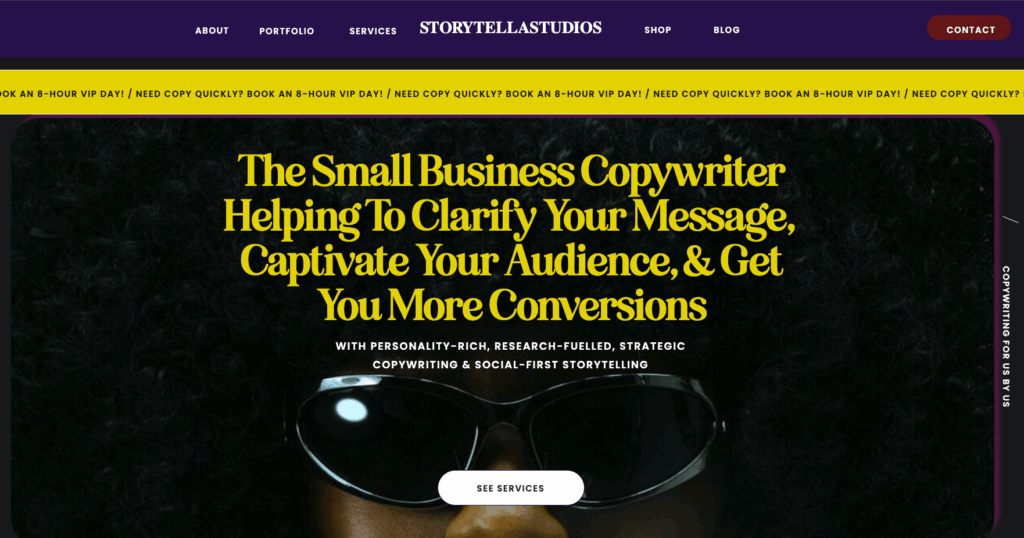
Yes, I know, hOw aUdACious Of mE to suggest I’m one of your favourite brands (but maybe I’m ambitious 😜). But let me tell you why this headline on my home page’s hero section works:
- It uses the exact phrasing my ideal clients used in a 1- question survey they answered after filling out my contact form
- It speaks directly to what they want (a clearer message, a captivated audience, and more conversions)
- It communicates a simple promise, and uses the problem/solution headline framework
Wrapping It Up
So now you know how to write great headlines is knowing that it’s both an art and a science. By following this six-step framework—knowing your audience, clarifying your value proposition, choosing the right formula, writing multiple variations, optimizing for clarity, and testing rigorously—you can improve your headlines’ effectiveness like CRAZY.
Remember that writing great headlines takes time and practice. Your first attempts might feel awkward or forced, but the more you get used to using these principles, the easier and more intuitive it’ll feel.
Your headline is the first impression, the gateway, and often the deciding factor in whether someone engages with your content or moves on. Take the time to get it right, and everything else will get easier.


